December 22nd Scots Book of Days. A.D. 1507 Andro Myllar Edinburgh bookseller.
1507 [YYMA 36 – Yours for Yesteryear the Millers of Ayrshire] Another payment of 50 shillings [by the Lord High Treasurer was made to Andro Myllar Edinburgh bookseller] in [22] December, 1507, but he was not then in Edinburgh; the ‘iij prentit bukis were tane fra Andro Millaris wif.’ [three printed books were taken from Andrew Millar’s wife.] Miller’s absence is explicable: during the years 1505-07 Millar was a publisher.
In 1506, Exposito Sequentiarum, a liturgical work describing the usage of Sarum in England, was printed for Millar; a copy turned up in a collection from Tours that was sold in Paris in 1869. The copy in the British Museum is believed to be unique. In it is Myllar’s device, reproduced as the colophon of this publication: the central figure is a miller with a sack on his back, climbing up to the door of a four-vaned windmill on a ladder around whose base are some large-scale flowers. 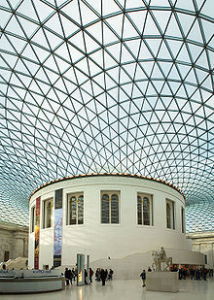 Hanging by a strap from a peg on the mill is a shield bearing a weathervane whose base is composed of an alpha and an omega. Two small shields, each bearing three fleur-de-lys, are in the upper corners; Androw Myllar is printed in bold letters at the bottom.
Hanging by a strap from a peg on the mill is a shield bearing a weathervane whose base is composed of an alpha and an omega. Two small shields, each bearing three fleur-de-lys, are in the upper corners; Androw Myllar is printed in bold letters at the bottom.
The centre of the British museum was redeveloped in 2001 to become the Great Court, surrounding the original Reading Room, Wikipedia, which has Myllar’s printed book of Scotland. The story of the Andrew Myllar’s family disappears for 54 years, until about 1560, when another Andrew Myllar marries a daughter of the Lord Ochiltree, clan Stewart, and Andrew later becomes brother in law to John Knox the Divine.
1509 Battle of Polesella forces of the Duchy of Ferrara and the Republic of Venice, was a naval battle on the River Po in the War of the League of Cambrai in the Italian Wars. 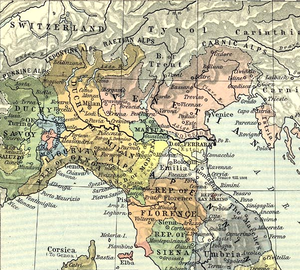 Northern Italy in 1494; by the start of the war in 1508, Louis XII had expelled the Sforza from the Duchy of Milan and added its territory to France. Pope Julius II, intending to curb Venetian influence in northern Italy, had created the League of Cambrai, an anti-Venetian alliance that included, besides himself, Louis XII of France, Holy Roman Emperor Maximilian I and Ferdinand II of Aragon. Although the League was initially successful, friction between Julius and Louis caused it to collapse by 1510; Julius then allied himself with Venice against France.
Northern Italy in 1494; by the start of the war in 1508, Louis XII had expelled the Sforza from the Duchy of Milan and added its territory to France. Pope Julius II, intending to curb Venetian influence in northern Italy, had created the League of Cambrai, an anti-Venetian alliance that included, besides himself, Louis XII of France, Holy Roman Emperor Maximilian I and Ferdinand II of Aragon. Although the League was initially successful, friction between Julius and Louis caused it to collapse by 1510; Julius then allied himself with Venice against France.
1606 sometime in, The once grand title ‘Prior of Coldingham’ were held by the sixth Lord Home. Home gave up this spirituality, and the Scottish Parliament confirmed it.
1715 Chevalier de St George , (James VIII Stewart, afterwards nicknamed auld Pretender), lands at Peterhead. [TG72-409]. The Chevalier responded to an invitation to head the army, and game with ONLY six gentlemen. The army of Mar had already retreated north to Perth. Chevalier went to Fetteresso, Chevalier met the Earl of Mar with 30 nobles and gentlemen, then went to Dundee. Tytler’s Britannica 228. 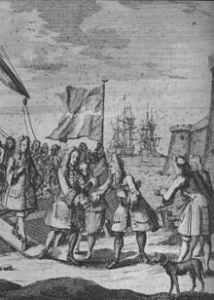 The Old Pretender lands in Scotland after Sheriffmuir. An 18th-century engraving.
The Old Pretender lands in Scotland after Sheriffmuir. An 18th-century engraving.
James Francis Edward, Prince of Wales (the Chevalier de St George, “The King Over the Water“, “The Old Pretender” or “The Old Chevalier“; 10 June 1688 – 1 January 1766) was the son of the deposed James II of England and Ireland (James VII of Scotland).
1825 written ‘Bonnie Dundee’ is a 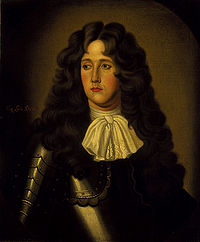 poem and a song about John Graham, 7th Laird of Claverhouse, 1st Viscount Dundee, who was known by this nickname. In 1684 Dundee Married Lady Jean Cochrane (clan Cochrane, William 1st Earl of Dundonald’s daughter, and niece of Colonel Hugh Cochrane, Covenanters and Presbyterians). The song has been used as a regimental march by several Scottish regiments in the British Army and was adapted by Confederate troops in the American Civil War. Called “Bluidy Clavers” (Bloody Claverhouse) by his opponents [Presbyterians], but ‘Bonnie Dundee’ by his followers among the Jacobites [Catholics]. John’s nickname, “Bonnie”, arose either from his exploits as a leader or that he was considered handsome. Walter Scott – On 22 December 1825 Scott wrote in his journal The air of ‘Bonnie Dundee’ running in my head today I [wrote] a few verses to it before dinner, taking the key-note from the story of Claverse leaving the Scottish Convention of Estates in 1688-9. Scott’s namesake great-grandfather, Walter Scott, had been among Claverhouse’s followers and describing himself as “a most incorrigible Jacobite”.
poem and a song about John Graham, 7th Laird of Claverhouse, 1st Viscount Dundee, who was known by this nickname. In 1684 Dundee Married Lady Jean Cochrane (clan Cochrane, William 1st Earl of Dundonald’s daughter, and niece of Colonel Hugh Cochrane, Covenanters and Presbyterians). The song has been used as a regimental march by several Scottish regiments in the British Army and was adapted by Confederate troops in the American Civil War. Called “Bluidy Clavers” (Bloody Claverhouse) by his opponents [Presbyterians], but ‘Bonnie Dundee’ by his followers among the Jacobites [Catholics]. John’s nickname, “Bonnie”, arose either from his exploits as a leader or that he was considered handsome. Walter Scott – On 22 December 1825 Scott wrote in his journal The air of ‘Bonnie Dundee’ running in my head today I [wrote] a few verses to it before dinner, taking the key-note from the story of Claverse leaving the Scottish Convention of Estates in 1688-9. Scott’s namesake great-grandfather, Walter Scott, had been among Claverhouse’s followers and describing himself as “a most incorrigible Jacobite”.
John Graham of Claverhouse, 7th Laird of Claverhouse, then (1688) 1st Viscount Dundee,
To the Lords of Convention ’twas Clavers who spoke,’Ere the King’s crown shall fall there are crowns to be broke;‘So let each Cavalier who loves honour and me,Come follow the bonnet of Bonny Dundee.’
Come fill up my cup, come fill up my can,Come saddle your horses, and call up your men; Come open the West Port and let me gang free,And it’s room for the bonnets of Bonny Dundee!
Dundee he is mounted, he rides up the street, The bells are rung backward, the drums they are beat; But the Provost, douce man, said, “Just e’en let him be, The Gude Town is weel quit of that Deil of Dundee.
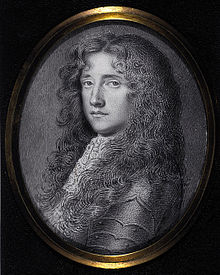 John Graham of Claverhouse, Viscount Dundee, 1648 – 1689 (nicknamed “Bonnie Dundee”). Miniature by David Paton, made between 1660 and 1695. Displayed by the National Galleries of Scotland. The Graham family was descended from King Robert III, through his second daughter Princess Mary. Both John and David were educated at the University of St Andrews, graduating in 1661. Wikipedia cites him as a Tory and Episcopalian.
John Graham of Claverhouse, Viscount Dundee, 1648 – 1689 (nicknamed “Bonnie Dundee”). Miniature by David Paton, made between 1660 and 1695. Displayed by the National Galleries of Scotland. The Graham family was descended from King Robert III, through his second daughter Princess Mary. Both John and David were educated at the University of St Andrews, graduating in 1661. Wikipedia cites him as a Tory and Episcopalian.
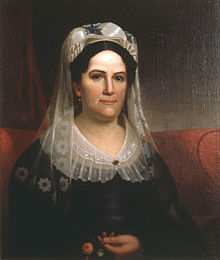 1828 Rachel Donelson Robards Jackson, born Rachel Donelson, (June 15, 1767 – December 22, 1828) was the wife of Andrew Jackson, the 7th President of the United States. Rachel Donelson was born near the Banister River, about ten miles from Chatham, Virginia in Pittsylvania County on June 15, 1767. Her father was Colonel John Donelson (1718–1785), co-founder of Nashville, Tennessee, and her mother was Rachel Stockley Donelson (1730-1801). Her great-grandfather, Patrick Donelson, was born in Scotland about 1670. She was Presbyterian. She was an avid reader of the Bible and religious works as well as poetry. She died in 1828, and she was buried on the grounds at The Hermitage. First Lady of the United States.
1828 Rachel Donelson Robards Jackson, born Rachel Donelson, (June 15, 1767 – December 22, 1828) was the wife of Andrew Jackson, the 7th President of the United States. Rachel Donelson was born near the Banister River, about ten miles from Chatham, Virginia in Pittsylvania County on June 15, 1767. Her father was Colonel John Donelson (1718–1785), co-founder of Nashville, Tennessee, and her mother was Rachel Stockley Donelson (1730-1801). Her great-grandfather, Patrick Donelson, was born in Scotland about 1670. She was Presbyterian. She was an avid reader of the Bible and religious works as well as poetry. She died in 1828, and she was buried on the grounds at The Hermitage. First Lady of the United States. ![]()
In 1877 Seventeen Eminent Scots’ Spirits, including Donelson, appeared to and requested Baptism from Wilford Woodruff, President of the Saint George Temple, WASHINGTON, Utah 22-23 August 1877. Woodruff’s eminent men – Scots
On August 22nd and 23rd 1877, Wilford Woodruff, later reported that three knights, among others, Sir Walter Scott ‘called upon me, as an Apostle of the Lord Jesus Christ, in the Temple at St. George, two consecutive nights, and demanded at my hands that I should go forth and attend to the ordinances of the House of God for them.’ A high honor indeed! 6) Great grand father Walter Scott 1620-1688 had
5) Walter Beardie Scott 1679-3 nov 1729 married Margaret Campbell had
4) Robert Scott 1695 -1775 Fququier Virginia married Barbara Haliburton (Mother Janet Campbell, Father Thomas Haliburton) had
3) Walter SCOTT (AFN: 9HC9-BF) 1729-1799 married Anne RUTHERFORD (AFN: 20NB-6K2) (M. Elizabeth Swinton, GF John Swinton.
Swinton  Motto: J’ESPERE [from French “I hope”]. Chief: John Walter Swinton of that Ilk. Crest: A boar chained to a tree Proper.) had
Motto: J’ESPERE [from French “I hope”]. Chief: John Walter Swinton of that Ilk. Crest: A boar chained to a tree Proper.) had
2) Sir Walter Scott(AFN: 9HC9-DR) 15 Aug 1771 Edinburgh, Midlothianshire, Scotland Death: 21 Sep 1832 Abbotsford, Roxburgh, Scotland married Charlotte Mary CARPENTER (AFN: JW1X-3V)Family
CARPENTIER (AFN: 20NB-6L8) Marriage: Dec 1797 Spouse: Margaret Charlotte CHARPENTIER (AFN: 9HC9-FX
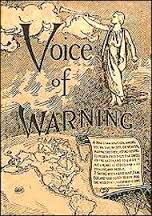 1839 Edinburgh and the Gospel of Jesus Christ. Samuel Mulliner (b. 1809), and Alexander Wright (b. 1804), Scots, arrive as missionaries. [Ensign Feb. 1987] They sought out Samuel’s parents in Edinburgh. Received with “great rejoisen” on the evening of December 22, they “let them [k]now our erand to scotland.” This home evening saw the first preaching of the restored gospel in that country. Born in 1804, Alexander had emigrated to Canada in 1835, joined the Church there, and was sent back to Great Britain on a mission in the early months of 1839. He walked from Ohio to New York City “at the rate of twenty or twenty-five miles a day,” 1 and there met another native Scot who would accompany him on the first Latter-day Saint missionary journey to Scotland. Sample pamphlet
1839 Edinburgh and the Gospel of Jesus Christ. Samuel Mulliner (b. 1809), and Alexander Wright (b. 1804), Scots, arrive as missionaries. [Ensign Feb. 1987] They sought out Samuel’s parents in Edinburgh. Received with “great rejoisen” on the evening of December 22, they “let them [k]now our erand to scotland.” This home evening saw the first preaching of the restored gospel in that country. Born in 1804, Alexander had emigrated to Canada in 1835, joined the Church there, and was sent back to Great Britain on a mission in the early months of 1839. He walked from Ohio to New York City “at the rate of twenty or twenty-five miles a day,” 1 and there met another native Scot who would accompany him on the first Latter-day Saint missionary journey to Scotland. Sample pamphlet
1862 Cornelius McGillicuddy, Sr. (December 22, 1862 – February 8, 1956), better known as Connie Mack, was an American professional baseball player, manager, and team owner. The longest-serving manager in Major League Baseball history, he holds records for wins (3,731), losses (3,948), and games managed (7,755), with his victory total being almost 1,000 more than any other manager. The Scots clan McGillicuddy was Jacobite. Mack’s parents came from Ireland. The I Love Lucy TV series gave the heroine’s name as fictional Lucy Ricardo (née Lucille Esmeralda McGillicuddy).
1903 Future winner of the 1905 The John Scott Legacy Medal and Premium, John Moses Browning (January 23, 1855 – November 26, 1926), received patent. Browning was a member of The Church of Jesus Christ of Latter-day Saints. (clans Hamilton –Avondale, Lanarkshie, Scotland, Allison, Ellyson – Windyedge, Lanark)
 The druggist John Scott of Edinburgh organized a $4,000 fund in 1816 for The John Scott Legacy Medal and Premium, to be presented to an inventor whose inventions improved the “comfort, welfare, and happiness of human kind” in a significant way.
The druggist John Scott of Edinburgh organized a $4,000 fund in 1816 for The John Scott Legacy Medal and Premium, to be presented to an inventor whose inventions improved the “comfort, welfare, and happiness of human kind” in a significant way. 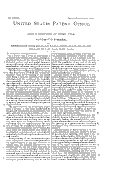 The Franklin Institute and the City Council of Philadelphia
The Franklin Institute and the City Council of Philadelphia
The Patent U.S. Patent 747,585 Colt Model 1903 Pocket Hammerless automatic pistol.
1941 fictional Archibald “Archie” Andrews debuted in Pep Comics 22 (December, 1941), age 17. Archie is the only child of fictional Mary and Fred Andrews. Mary and Fred Andrews 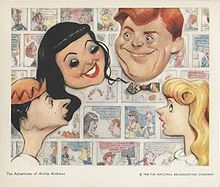 are of Scottish descent. Archie’s fictional paternal grandfather Andy Andrews, immigrated to the United States from Scotland. Archie has been depicted wearing the traditional kilt of his ancestors and playing bagpipes. Wikipedia.
are of Scottish descent. Archie’s fictional paternal grandfather Andy Andrews, immigrated to the United States from Scotland. Archie has been depicted wearing the traditional kilt of his ancestors and playing bagpipes. Wikipedia.
The Adventures of Archie Andrews 1947
1942 Longstop hill Djebel el Rhar North Africa. The Coldstream Guards, oldest Regiment, of the British Army , originating in Coldstream Scotland in 1650.
- The Coldstreams were keen to close with the enemy in their first fight since Dunkirk, two and a half years earlier, and they tramped forward in bright moonlight that filtered through scudding clouds. At 11 p.m. on Tuesday, December 22, a barrage by sixteen British guns confirmed for the Germans the Allied assault that Luftwaffe reconnaissance had detected earlier. *** The cannonade lifted, and four Coldstream companies pushed off. *** Slippig on the scree and shooting from the hip, the Coldstreams scrambled toward the top even as a company commander and sergeant major fell dead. *** German pickets counterattacked then scuttled back.*** Coldsreams followed *** then dug in among the rocks. On the right flank of the hill, next to Highway 50 another Coldstream company seized a rail station *** Coldstreams held the high ground. **
 1962 Ralph Nathaniel Twisleton-Wykeham-Fiennes (born 22 dec 1962). He is also well known for playing fictional Scottish Lord Voldemort in the fictional Scottish Harry Potter film series.
1962 Ralph Nathaniel Twisleton-Wykeham-Fiennes (born 22 dec 1962). He is also well known for playing fictional Scottish Lord Voldemort in the fictional Scottish Harry Potter film series. In Character.
In Character.
1971 Kidnapped is a 1971 (release date American) British adventure film directed by Delbert Mann and starring Michael Caine and Trevor Howard based on the novel Kidnapped and the first half of the sequel Catriona, which begins precisely where Kidnapped ends, at 2 PM on 25 August 1751 outside the British Linen Company in Edinburgh, Scotland. by Robert Louis Stevenson.
 The book recounts the attempts of the hero, David Balfour, to gain justice for James Stewart (James of the Glens), who has been arrested and charged with complicity in the Appin Murder. David makes a statement to a lawyer and goes on to meet Lord Prestongrange, the Lord Advocate, to press the case for James’ innocence. However, his attempts fail as he is once again kidnapped and confined on the Bass Rock, an island in the Firth of Forth, until the trial is over, and James condemned to death. David also meets and falls in love with Catriona MacGregor Drummond, the daughter of James MacGregor Drummond, known as James More, also held in prison, whose escape she engineers.
The book recounts the attempts of the hero, David Balfour, to gain justice for James Stewart (James of the Glens), who has been arrested and charged with complicity in the Appin Murder. David makes a statement to a lawyer and goes on to meet Lord Prestongrange, the Lord Advocate, to press the case for James’ innocence. However, his attempts fail as he is once again kidnapped and confined on the Bass Rock, an island in the Firth of Forth, until the trial is over, and James condemned to death. David also meets and falls in love with Catriona MacGregor Drummond, the daughter of James MacGregor Drummond, known as James More, also held in prison, whose escape she engineers.
- Drummond of Cargill Stubhall Perth 8th c 2Hamilton2Stewart 2miller2Simmons 2Choate zoe
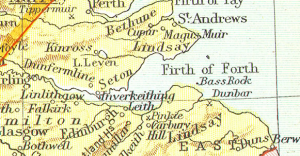 Full title of the book – Kidnapped: Being Memoirs of the Adventures of David Balfour in the Year 1751: How he was Kidnapped and Cast away; his Sufferings in a Desert Isle; his Journey in the Wild Highlands; his acquaintance with Alan Breck Stewart and other notorious Highland Jacobites; with all that he Suffered at the hands of his Uncle, Ebenezer Balfour of Shaws, falsely so-called: Written by Himself and now set forth by Robert Louis Stevenson.
Full title of the book – Kidnapped: Being Memoirs of the Adventures of David Balfour in the Year 1751: How he was Kidnapped and Cast away; his Sufferings in a Desert Isle; his Journey in the Wild Highlands; his acquaintance with Alan Breck Stewart and other notorious Highland Jacobites; with all that he Suffered at the hands of his Uncle, Ebenezer Balfour of Shaws, falsely so-called: Written by Himself and now set forth by Robert Louis Stevenson.
1988 Lockerbie bombing of Pan Am Flight 103 on 21 December 1988 when the wreckage fell on the town of Lockerbie in the Dumfries and Galloway region of south-western Scotland.
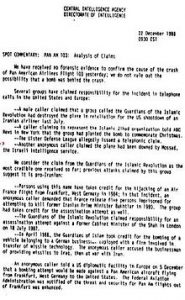 CIA and the Helsinki warning, the day after, a day late.
CIA and the Helsinki warning, the day after, a day late.
1994 Shallow Grave shot predominantly at Glasgow rather than Edinburgh, which is where the story is set, since Glasgow film fund gave them a £150,000 grant. Locations in the film include: Flat 6 North East Circus Place, New Town, Edinburgh Hospital scenes were filmed at Royal Alexandra Hospital, Paisley, Renfrewshire ceilidh scene Townhouse 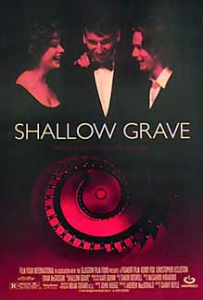 Hotel – 54 West George Street, Glasgow, Strathclyde
Hotel – 54 West George Street, Glasgow, Strathclyde
Poster Shallow Grave.
Disclaimer: The author of each article published on this web site owns his or her own words. The opinions, beliefs and viewpoints expressed by the various authors and forum participants on this site do not necessarily reflect the opinions, beliefs and viewpoints of Utah Standard News or official policies of the USN and may actually reflect positions that USN actively opposes. No claim in public domain or fair use. © John Choate
Utah Standard News depends on the support of readers like you.
Good Journalism requires time, expertise, passion and money. We know you appreciate the coverage here. Please help us to continue as an alternative news website by becoming a subscriber or making a donation. To learn more about our subscription options or make a donation, click here.
To Advertise on UtahStandardNews.com, please contact us at: ed@utahstandardnews.com.


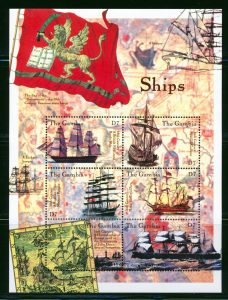

Comments - No Responses to “December 22nd Scots Book of Days. A.D. 1507 Andro Myllar Edinburgh bookseller.”
Sure is empty down here...